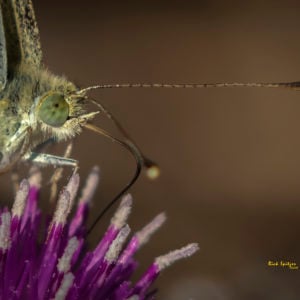 It’s that exciting time of year when flecks of color are showing themselves. The very first wildflowers are appearing, as are the first flying flecks of color, butterflies.
It’s that exciting time of year when flecks of color are showing themselves. The very first wildflowers are appearing, as are the first flying flecks of color, butterflies.
It is without a doubt that butterflies bring a wide variety of color and beauty to any landscape they grace with their presence. However, behind that beauty lies a unique group of animals that also have a lot of ecological value. Not only do butterflies serve as important pollinators, but they are also a valuable food source, as well as a significant bioindicator, helping to keep our ecosystems in balance. Here in the Rocky Mountains, we are lucky to have a wide range of butterfly species. The varied elevations in mountainous areas create habitat variations which account for this spectacular range of species. In Colorado alone, there are about 250 species of butterflies that you might encounter of the approximately 17,500 species worldwide. Butterflies are widespread and can be found on every continent besides Antarctica.
Butterflies play the vital role of pollinator, being major transporters of pollen for both wild and cultivated plants. Over 90% of plants depend on a pollinator to distribute their pollen in order to successfully reproduce. As a butterfly feeds on a flower’s nectar, choosing red or yellow flowers with a strong scent, they collect pollen on their body and transport it. The advantage that butterflies have over bees is that they can travel longer distances, pollinating more flowering plants over greater areas. How does this affect us? Approximately one third of the food humans consume depends on the work of pollinators like the butterfly.
Over the course of their life cycle, butterflies coexist with the plants in their environment. Butterflies are a type of insect, and like other insects, they respond quickly to environmental changes. Even the smallest changes in plant life cycles or populations can have an effect on butterfly abundance and diversity. When we have a large amount of various butterfly species, this is an indicator that our environment is in good health. Butterflies also make up an important part of the food chain, playing the role of both predator and prey. Some species act as a form of natural pest control, eating destructive bugs such as aphids. In both adult and caterpillar form, butterflies also serve as a food source to animals such as birds and bats.
Taking that extra step past beauty appreciation to learn more about butterfly biology and ecology gives us a deeper understanding about the complexity of our natural communities. Butterflies require particular food plants and habitats, making them vulnerable to habitat alteration from overgrazing, invasive species, and air pollution. In order to protect the diversity of butterflies, natural habitats must be conserved and managed properly. The varying elevation in the mountains also makes butterflies a good indicator of climate change. With warmer temperatures, rare species that typically inhabit lower elevations start to become more common at higher elevations.
Learning about the nature of species like butterflies, including what they require to survive, and passing on this information is vital to conservation. And we can help butterflies in this quest to survive. Specifically, we can help butterfly populations by providing more habitable environments in our own gardens by planting colorful, nectar-rich flowers which will help butterflies and brighten up your garden!
Iza Ruffino is a naturalist at WMSC in Avon and she enjoys sipping on coffee while walking through the wildflowers, looking for butterflies, and catching the sunset with all the woodland creatures.
Photo by Rick Spitzer









